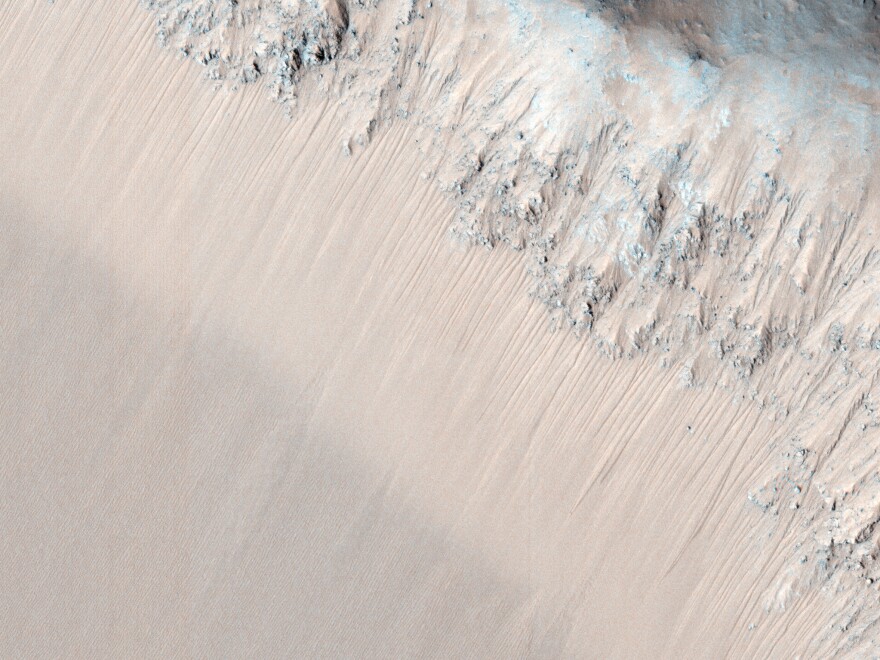Scientists have caught Mars crying salty tears.
Photos from NASA's Mars Reconnaissance Orbiter show dark streaks flowing down Martian slopes. The streaks appear in sunny spots or when the weather is warm, and they fade when the temperature drops.
Water was suspected to be involved, but now scientists have confirmed its presence. The new analysis, published in Nature Geoscience, shows salts mixed with water when the streaks are darkest. The water disappears when the streaks lighten.

"It's only when these streaks are biggest and widest that we see evidence for molecular water," says Lujendra Ojha, a graduate student at the Georgia Institute of Technology.
Ojha cautions this isn't the same as streams trickling downhill on Earth. Standing on the streaks would be like standing on a hot beach on Earth and dribbling a little water out of a drinking bottle. "You would just see a hint of wetness," he says.

Ojha says the water could be important for future exploration of Mars. It might be that astronauts could one day use it for everything from drinking water to rocket fuel, but that depends on how much there is.
The water could be coming from a subsurface reservoir, but that's not the only option, Ojha says. Ice, or even moisture in the atmosphere, could also be causing the streaks.
"We're not entirely sure what the source of the water may be," he says.
Copyright 2020 NPR. To see more, visit https://www.npr.org. 9(MDAyNDY5ODMwMDEyMjg3NjMzMTE1ZjE2MA001))





